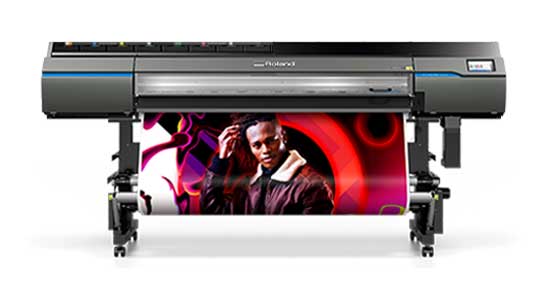Everything about Digital Printing
Everything about Digital Printing
Blog Article
10 Easy Facts About Digital Printing Explained
Table of ContentsThe Greatest Guide To Digital PrintingDigital Printing Fundamentals ExplainedThe Best Strategy To Use For Digital PrintingWhat Does Digital Printing Mean?Some Ideas on Digital Printing You Should KnowSome Of Digital PrintingRumored Buzz on Digital PrintingDigital Printing for Dummies
Personalization additionally allows companies to stand apart in a crowded market by creating unique advertising and marketing products that separate them from their competitors. Among the major advantages of digital printing is the capacity to publish variable data. Each printed item can be unique, enabling businesses to produce personalized advertising and marketing products that talk straight to their target market.Digital printing additionally enables personalization in the layout of advertising and marketing materials. With electronic printing, services can develop styles that are distinct and customized to their specific needs. This can include personalized graphics, typefaces, and designs that can help to distinguish them from their competitors. Another benefit of digital printing is the capacity to print as needed.
10 Easy Facts About Digital Printing Shown
By printing smaller amounts of advertising and marketing materials, services can lower waste and stay clear of the need for excess stock. Digital printing is likewise flexible.
By using various materials and styles, businesses can create distinct marketing products that attract attention from their competitors and stand out from their target audience. Digital printing likewise uses uniformity. With conventional printing approaches, there is usually variant in between prints due to differences in ink insurance coverage, pressure, and various other factors.
This uniformity can help construct consumer trust fund and reliability, revealing that the service is committed to supplying high-grade materials. Consistency is particularly essential for services that intend to build customer depend on and trustworthiness. By making sure that every print is regular, companies can reveal that they are committed to providing high-grade materials and taking notice of the information.
The Definitive Guide for Digital Printing

In enhancement, electronic printing creates less waste because it can print on demand and in smaller amounts, reducing the need for excess stock and materials. Digital printing also uses much less power contrasted to standard printing techniques. Digital printers do not need as much energy to run, as they do not need to heat up as a lot or use as much power to run.
Not known Details About Digital Printing

Countered printing requires a plate for every shade published. Traditional balanced out printing is a print technique that uses light weight aluminum plates to move ink onto a rubber sheet (frequently described as a "covering"). The image is then rolled onto the printing surface. This printing technique is thought about "countered" because the ink is not transferred to the paper straight.
Getting My Digital Printing To Work
The tools's set-up costs are high initially, added systems become reasonably much less costly as the quantity rises. Balanced out printing allows for a variety of print materials to be made use of throughout production. It permits the printer to use various paper types, customized coatings, and different inks. The top quality pictures produced via countered printing make it the favored method, specifically among graphic developers, when seeking the greatest color recreation, detail, and professional-looking prints.
The fundamental printing technique continues to be countered. For electronic inkjet printing, ink is transferred directly onto the surface. As opposed to relying upon aluminum plates and rubber coverings to move an image, digital printing utilizes liquid ink during manufacturing. Conventional home inkjet printers are just one of one of the most common electronic printing methods.
The Best Guide To Digital Printing
Much better color fidelity refers to both the accuracy of the shades and their balance in the style. Because countered printing can blend customized shade inks for each job, it will normally obtain the shades spot-on. Functions similarly well on practically any sort of product. Trusted, premium photo this article top quality. Depend on countered printing for clean, distinct kinds and pictures without streaks or spots.
It costs a lot to start a countered job. You have to spend money right into creating the plates, which takes some time. However, when you have actually spent it, all of the materials are prepared to go, and you'll spend less on large offset jobs than an electronic print, which has to do with the same per item no matter just how huge the work gets.
Digital printing is much less pricey for low-volume jobs. The price per system goes down for electronic printing, so at some factor, they crisscross. Changing information within a single print task.
Rumored Buzz on Digital Printing
While electronic printing or inkjet printing is the preferred choice in the present times, there are engaging factors to convert from offset to electronic printing systems. When printing offset or electronically, essential decisions and processes are included in color matching.
Industrial inkjet printing supplies adaptability for printing on lots check this site out of different substratums. Digital printing is ideal for clients that do not call for longer runs and warehousing products.

One benefit of electronic printing is picking from a wide variety of digital substrates. With electronic printing, the expense of the substratum in the total task is small.
Digital Printing - The Facts
drop-on-demand is the second printing modern technology to take into consideration. Constant inkjet systems need considerable upkeep, more driver training, and higher downtime. However, equipment costs in inkjet printing are far reduced than balanced out printing as there are no plate-making, plates, and press expenditures. Beyond the capital spending, the prepress tools and printing machine require highly experienced operators in countered printing, which includes go to my blog labor prices.
Report this page